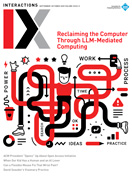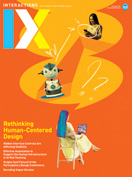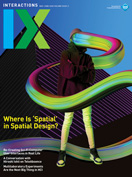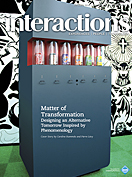Authors:
Michal Rinott, Eran Gal-Or, Shachar Geiger, Luka Or, Stefanie Mueller, Pedro Lopes, Konstantin Kaefer, Bastian Kruck, Patrick Baudisch, Shunichi Kasahara, Ryuma Niiyama, Valentin Heun, Hiroshi Ishii, Yuichiro Katsumoto, Satoru Tokuhisa, Masa Inakage
Cubes is a collection of 20 objects, each combining an input and an output. Shaking the Dizzy Cube makes it totter around; rotating the Homesick Cube makes it turn back to face our lab. The Knock Cube returns your knock. By fixing the form of these interactive objects into the simplest shapea cubewe can explore affordances and behaviors in a lab-like environment. Our cubes are transparent, showing the logic and beauty of their insides: electronic components and structure. The project celebrates the potential of simple tangible interactions, and the power of multiples, for engagement and pleasure.
Originally commissioned by the Design Museum Holon with generous funding from the Porter Foundation.
Project website: http://idho.org.il/cubes http://www.youtube.com/watch?v=sVYeElTVKT4
Publication: Rinott, R., Geiger, S., Gal-Or, E., and Or, L. Cubes. Proc. of the 7th International Conference on Tangible, Embedded and Embodied Interaction. ACM, New York, 2013, 397398.
Michal Rinott | Holon Institute of Technology | [email protected]
Eran Gal-Or | Holon Institute of Technology | [email protected]
Shachar Geiger | Holon Institute of Technology | [email protected]
Luka Or | Holon Institute of Technology | [email protected]
Constructable is an interactive drafting table based on a laser cutter that produces precise physical output in every editing step. Users interact by drafting directly on the workpiece using hand-held laser pointers. The system tracks the laser dot, beautifies its path, and implements its effect by cutting the workpiece using a fast, high-powered laser cutter. Constructable achieves precision through tool-specific constraints, user-defined sketchlines, and using the laser cutter itself, rather than a screen or projection, for all visual feedback.
Project website: http://www.hpi.uni-potsdam.de/baudisch/projects/constructable.html http://www.youtube.com/watch?v=8g3LaF9oVFY&feature=g-hist
Publication: Mueller, S., Lopes, P., and Baudisch, P. Interactive construction: Interactive fabrication of functional mechanical devices. Proc. of UIST 2012, 599606.
Stefanie Mueller | Hasso Plattner Institute | [email protected]
Pedro Lopes | Hasso Plattner Institute | [email protected]
Konstantin Kaefer | Hasso Plattner Institute | [email protected]
Bastian Kruck | Hasso Plattner Institute | [email protected]
Patrick Baudisch | Hasso Plattner Institute | [email protected]
The exTouch is an embodied, spatially aware interface system that allows users to manipulate actuated objects in space using augmented reality. The system extends users' touchscreen interactions into the real world by enabling spatial control over an actuated object. When users touch a device shown in live video on the screen, they can change its position and orientation through multi-touch gestures or by physically moving the screen in relation to the controlled object. We demonstrated that the system can be used for applications such as an omnidirectional vehicle, a drone, and moving furniture in a reconfigurable room.
Project website: http://tangible.media.mit.edu/project/extouch/ http://vimeo.com/57514726
Publication: Shunic hi, K., Ryuma, N., Valentin H., and Hiroshi I. 2013. exTouch: Spatially-aware embodied manipulation of actuated objects mediated by augmented reality. Proc. of the 7th International Conference on Tangible, Embedded and Embodied Interaction. ACM, New York, 2013, 223228.
Shunichi Kasahara | MIT Media Lab and Sony Corporation | [email protected]
Ryuma Niiyama | MIT Media Lab | [email protected]
Valentin Heun | MIT Media Lab | [email protected]
Hiroshi Ishii | MIT Media Lab | [email protected]
Ninja Track is a belt-shaped object that consists of ABS parts hinged both longitudinally and transversely. When lying flat, Ninja Track is adequately flexible. When the user folds Ninja Track at the longitudinal hinges, it loses its flexibility and becomes a rigid stick. We created two types of electronic toys as examples of digital content that use Ninja Track. One is a gaming gadget, which can transform from a whip into a sword both virtually and physically. The other is a musical instrument, which produces sounds depending on its shape and user interaction.
Project website: http://www.yuichirock.com/nt/ https://vimeo.com/32763532
Publication: Katsumoto, Y., Tokuhisa, S., and Inakage, M. Ninja Track: Design of electronic toy variable in shape and flexibility. Proc. of the 7th International Conference on Tangible, Embedded and Embodied Interaction. ACM, New York, 2013, 1724. Katsumoto, Y. and Inakage, M. Ninja Track. Proc. of SIGGRAPH Asia 2011 Emerging Technologies. ACM, New York, 2011, Article 6.
Yuichiro Katsumoto | Keio-NUS CUTE Center | [email protected]
Satoru Tokuhisa | Keio-NUS CUTE Center | [email protected]
Masa Inakage | Keio-NUS CUTE Center | [email protected]
©2013 ACM 1072-5220/13/11 $15.00
Permission to make digital or hard copies of all or part of this work for personal or classroom use is granted without fee provided that copies are not made or distributed for profit or commercial advantage and that copies bear this notice and the full citation on the first page. To copy otherwise, to republish, to post on servers or to redistribute to lists, requires prior specific permission and/or a fee.
The Digital Library is published by the Association for Computing Machinery. Copyright © 2013 ACM, Inc.












Post Comment
No Comments Found